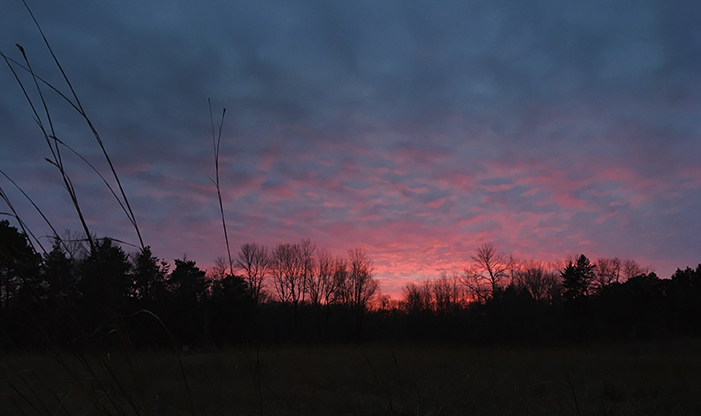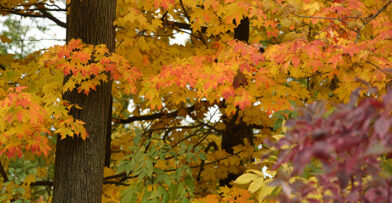The winter solstice is often called midwinter, the longest night, or the shortest day. It refers to a moment in time in which the period of daylight is at its shortest. The word solstice actually derives from the Latin word solstitium, which translates as “the apparent standing still of the sun.” In 2023, it occurs at 9:27 pm CST on December 21.
When the December solstice takes place, the sun is exactly overhead at the Tropic of Capricorn. This always takes place between December 20 and 23. On this day, the North Pole is tilted farthest away from the sun and is engulfed by continuous darkness or twilight.
Solstice and the Seasons
Because of the 23.5 degree tilt of the earth’s axis of rotation, the winter solstice occurs in December in the Northern Hemisphere. The seasons are determined by the tilt of the earth’s axis, not the distance from the sun. The earth’s orbit around the sun isn’t a perfect circle, but rather elliptical. The sun and the earth are actually closer together in winter. The precise time they are closest–called Perihelion–occurs in January, while Aphelion, when the earth is farthest from the sun, occurs in July.
The seasons are the opposite in the Southern Hemisphere. In 2023, their summer solstice will be on December 21. It is thus the longest period of daylight of the year for them.
Cultural Aspects of the Winter Solstice
Going back as far as prehistoric times, astronomical events have been used to guide people’s activities. They were signals in time to determine when to breed animals, sow seeds, and monitor winter supplies of food. People watched the seasons closely for economic reasons, paying close attention during winter because of the potential lack of nourishment. As you might imagine, the arrival of longer days would be significant to people waiting to plant crops.
Cultures throughout history have placed great importance on this time of year. It has often been accompanied by festivals and rituals marking the figurative death and rebirth of the sun. In temperate climates, the midwinter festival was the last celebration feast of the season, often including the last plentiful supply of meat.
For centuries, this solstice event has meant a time of reflection, renewal and rebirth across cultures, religions, and geographic boundaries. As the days lengthened from this point onward (reaching their maximum at the summer solstice in June), people looked forward to a gradual increase in daylight hours and the hopes and prospects for a fruitful new year.
It isn’t possible to observe the winter solstice directly because the sun appears to stand still. But people know the timing due to precise astronomical data tracking.
Consider enjoying the winter solstice this year by hiking at the Center!
This post was updated in December, 2023.


